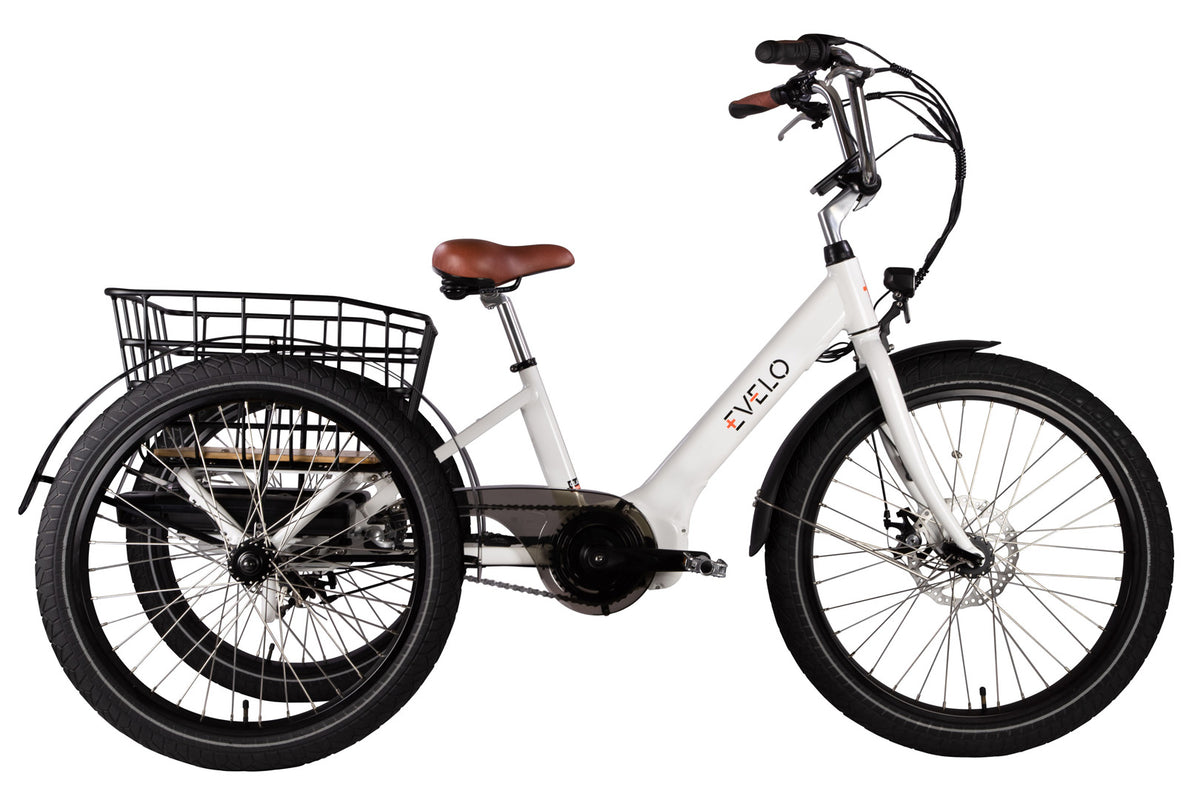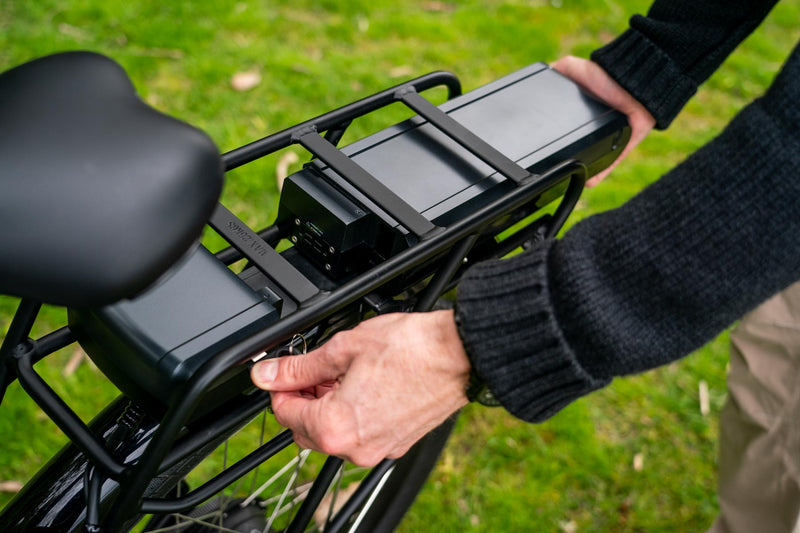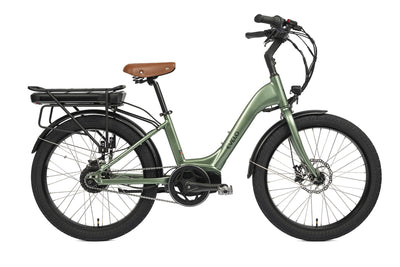Cadence or torque sensors tell an electric bike’s pedal-assist system (PAS) when to engage the motor and propel the eBike forward. Although just about any combination of a cadence sensor, a torque sensor, or both will work, each sensor type can have an impact on an electric bike’s performance and ride.
So what is the difference between a cadence sensor and a torque sensor on an electric bike? A common response in the bicycle manufacturing industry is that a cadence sensor determines if you are pedaling while a torque sensor measures how hard you are pedaling.
Pedal Assist Cadence Sensor
For many cadence-based pedal assist systems, the electric bike’s motor is engaged when the rider begins to pedal forward.
As an example, the EVELO Compass has five available levels of pedal assist or PAS. At each of these levels, the motor will provide a prescribed amount of power in response to a signal from the cadence sensor.
As the rider’s pedaling speed (cadence) increases the PAS will reduce the motor’s output.
Put another way, the motor produces a set amount of power when the pedal revolutions are relatively slow — for example when the rider is first starting out — as the pedal cadence and momentum increase, the motor’s power is reduced from 100 percent of the given PAS-level output target to about 70 percent of that target.
Here is a specific example, an electric bike that will produce 1000 watts of peak power in PAS level five. It will output 1000 watts until the pedal cadence reaches a pre-defined threshold. At this point, the rider has built up momentum, and the motor reduces output to 700 watts.
Later, if the rider downshifts to a high-speed, flat-ground gear and pedal cadence falls below the threshold, the motor will again produce 1000 watts of peak power (at PAS 5) to drive the bike forward.

A cadence sensor situated at the crank on an electric bike.
One of the benefits of using a cadence sensor is the relatively light pressure needed to employ it. In fact, recreational riders or riders with tender knees may find a cadence-based PAS relatively more comfortable to ride.
A cadence sensor does, however, require the rider to move the pedals at least a little before initially engaging the motor. For this reason, cadence-based pedal assist systems are coupled with a throttle in many cases. The rider can press the throttle to get the electric bike moving and then start pedaling to engage the PAS.
Pedal Assist Torque Sensor
In contrast to a cadence-sensor-based PAS, a torque sensor uses some form of a strain gauge to determine how much force the rider is applying to the pedal.
With a torque sensor in use, the electric bike’s motor will increase its output relative to the amount of pedal force the rider is applying. When the rider pedals hard the motor outputs more power up to the predetermined limit for a give PAS level.
A torque-sensor PAS can feel more like riding a conventional bicycle since the rider can sense the strain on the chain or belt and enjoy a direct connection to the motor.
A torque-based PAS may also engage relatively more quickly than a cadence-based PAS. And on some models, using only a torque-based PAS may increase range.
Both Sensors Together
Some electric bikes employ both a cadence-sensor and a torque-sensor as part of their pedal-assist systems. As an example, this was the case for the 2019 Aurora Limited Edition electric bike.
This premium EVELO eBike has all of the advantages of both a torque sensor and a cadence sensor. Riders get the responsiveness of the former with the soft-pedal feel of the latter.
To learn more about electric bikes and which features are best for you, please take a look at The Complete Electric Bike Buyer’s Guide.







 Easy Assembly
Easy Assembly
 Service and Repairs
Service and Repairs
 Ebike Articles & Content
Ebike Articles & Content










